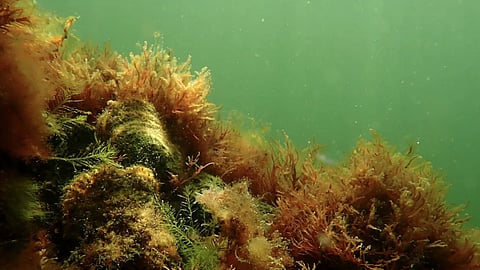Van Oord launches oyster restoration project at Port of Rotterdam
At least half a million flat oysters will be introduced into the Port of Rotterdam early next month as part of a new pilot project, Van Oord said in a press release.
It is the trial run of an innovative method combining nature restoration and the installation of marine infrastructure, such as wind turbines, breakwaters and subsea cables. Before being installed at sea, the foundations of this infrastructure are covered with juvenile oysters.
This pilot is part of a partnership between Van Oord and companies, research institutions, and nature organisations working together to restore oyster reefs in the North Sea on a large scale.
The new method, known as the remote setting method, involves cultivating millions of oyster larvae in a dedicated hatchery before transferring them to a harbour or other location close to the sea. There, they are placed in shipping containers filled with seawater and rocks.
In just a few days, the larvae attach themselves to the rocks and then grow into juveniles.
The consortium is also investigating the influence of reef sounds. Van Oord said that if it is proven that oysters use these sounds to find a suitable habitat for themselves, the sounds can be used to improve their chance of settling.
After a few weeks, the shipping containers are loaded onto vessels. The rocks bearing the juvenile oysters are released into the sea, where they seek their new habitat.
Van Oord said that, if successful, this modular, flexible design will provide a cost-efficient method for reef restoration that can be applied anywhere and on any scale.
By incorporating the oyster-bearing rocks directly into the engineering, construction and maintenance of wind farms, subsea cabling, breakwaters, platforms and other marine structures, the consortium members are combining marine infrastructure and large-scale nature restoration.
Researchers will spend the next few months monitoring the survival and growth rates of the oysters. Next year, the consortium members plan to test the remote setting method again, at a TenneT cable crossing in open sea.
The North Sea's oyster reefs have disappeared almost entirely, however, due to overfishing, pollution and disease. Van Oord believes the remote setting method can make a significant contribution to regrowing the reefs.


